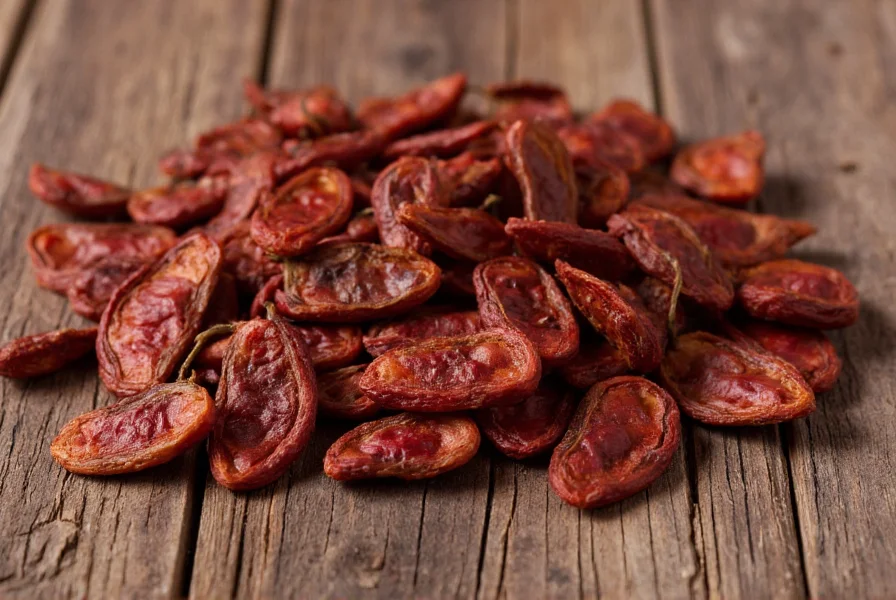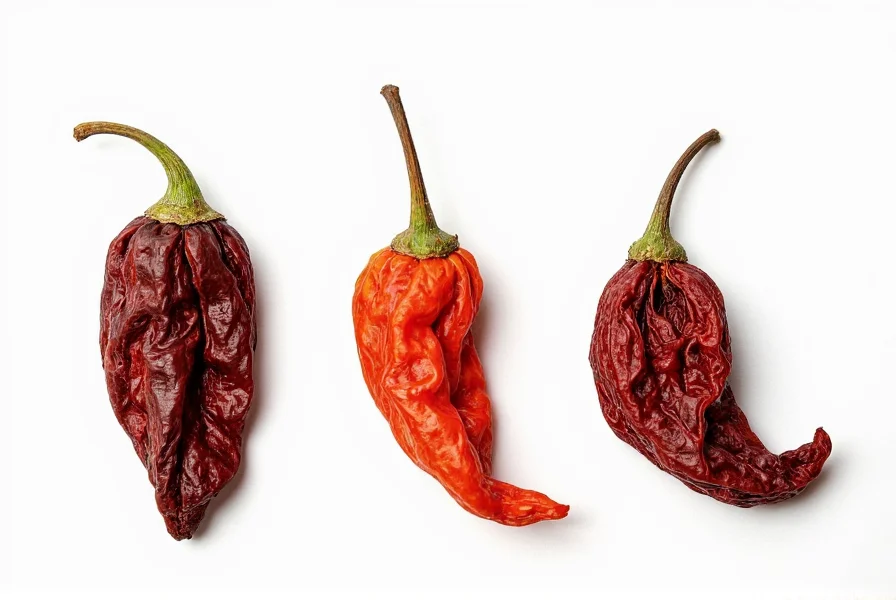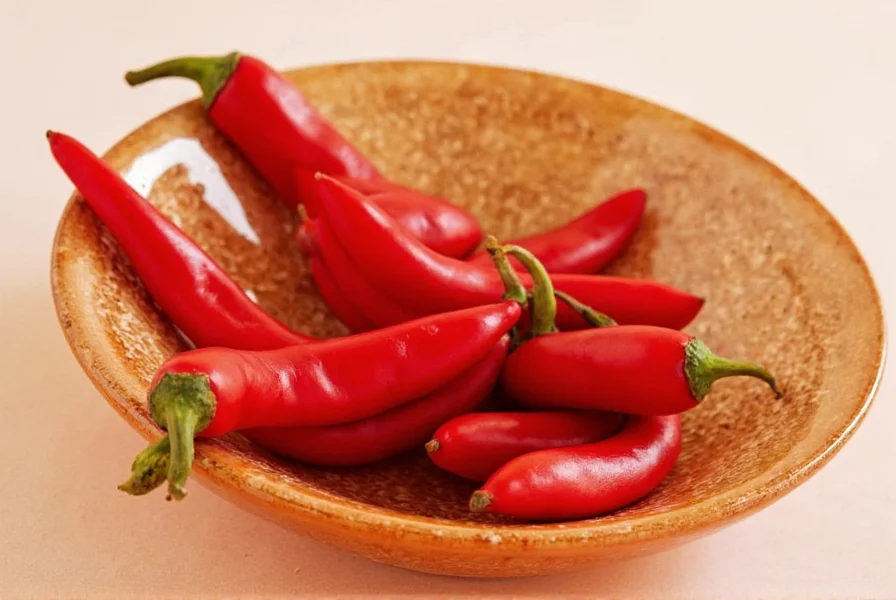Ancho chilies represent one of the most versatile and widely used dried peppers in Mexican cooking. Understanding this ingredient goes beyond simply identifying it—it's about recognizing how its unique transformation from fresh to dried creates entirely new culinary possibilities. Unlike many dried chilies that become significantly hotter, anchos maintain a relatively mild heat while developing remarkable depth of flavor.
Origin and Transformation Process
The journey of an ancho chili begins as a fresh poblano pepper, typically harvested when it reaches full maturity and turns from dark green to a deep, rich red. The transformation occurs through a careful drying process that concentrates flavors and creates the ancho's signature characteristics. This drying process isn't merely preservation—it fundamentally changes the chemical composition of the pepper, developing complex flavor compounds that don't exist in the fresh form.
Authentic ancho chilies come primarily from Mexico, particularly from regions like Puebla, where traditional drying methods have been perfected over generations. The name "ancho" means "wide" in Spanish, referring to the pepper's broad, flat shape that distinguishes it from other dried chilies.
Physical Characteristics and Identification
When properly dried, ancho chilies display several distinctive features:
| Characteristic | Description |
|---|---|
| Color | Deep reddish-brown to almost black when held to light |
| Shape | Broad, flat, heart-shaped (typically 4-6 inches long) |
| Texture | Leathery but pliable when properly dried (not brittle) |
| Aroma | Rich, earthy with notes of raisin, tobacco, and cocoa |
When selecting anchos, look for peppers that are flexible rather than brittle, as excessive dryness indicates age and flavor degradation. The best quality anchos will have a slightly oily sheen and release their characteristic aroma when gently rubbed.

Flavor Profile and Heat Level
The ancho's flavor profile represents one of the most complex among dried chilies. When properly prepared, it offers:
- Fruit notes: Dried cherry, prune, and raisin
- Earthy elements: Tobacco, cocoa, and subtle mushroom
- Subtle sweetness: Natural sugars concentrated during drying
- Very mild heat: 1,000-2,000 Scoville Heat Units (comparable to a bell pepper with just a hint of warmth)
Unlike many chilies where heat dominates, the ancho's mildness allows its nuanced flavors to shine through, making it an excellent choice for dishes where chili flavor should be present but not overwhelming. This characteristic explains why it's frequently used as a base for complex sauces like mole poblano, where it provides foundational flavor without excessive heat.
Culinary Applications and Preparation Methods
To unlock an ancho's full flavor potential, proper preparation is essential. Chefs and home cooks use several techniques to incorporate this versatile ingredient:
- Dry toasting: Briefly heating whole peppers in a dry skillet to release aromatic compounds
- Rehydration: Soaking in hot water (sometimes with vinegar or citrus) for 15-20 minutes until pliable
- Grinding: Processing rehydrated peppers into smooth pastes for sauces or drying and grinding into powder
- Direct use: Adding whole peppers to slow-cooked dishes like stews and braises
Professional kitchens often combine toasted and rehydrated anchos with other dried chilies like guajillo or pasilla to create layered flavor profiles. The rehydration liquid itself contains valuable flavor compounds and should be incorporated into final dishes rather than discarded.
Common Substitutions and Confusions
Many cooks confuse ancho chilies with similar dried peppers, particularly pasilla chilies. Understanding these distinctions prevents recipe failures:
- Ancho vs. Pasilla: Anchos come from dried poblanos (wide, heart-shaped), while pasillas come from dried mulatos (longer, narrower). Pasillas have a sharper, more prune-like flavor and slightly higher heat.
- Ancho vs. Mulato: Mulatos are also dried poblanos but harvested later when fully ripe and black. They have a deeper, more chocolate-like flavor.
When substitutions are necessary:
- For mild recipes: Use dried guajillo peppers (similar mild heat with brighter fruit notes)
- For complex sauces: Combine mild paprika with a touch of chipotle powder for depth
- Avoid substituting with significantly hotter peppers like arbol or cayenne

Nutritional Profile and Storage Tips
Ancho chilies offer more than just flavor—they contribute valuable nutrients to dishes. A single ounce (28g) of dried ancho provides:
- Approximately 80% of the daily recommended vitamin A
- Significant vitamin B6 and iron content
- Dietary fiber (about 3g per ounce)
- Antioxidants including capsaicinoids and carotenoids
Proper storage maintains quality and flavor:
- Store in airtight containers away from light and moisture
- Keep in a cool, dark pantry (not the refrigerator, which introduces moisture)
- Use within 6-12 months for optimal flavor (though safe indefinitely)
- Freeze for long-term storage (up to 2 years)
Practical Cooking Tips for Home Chefs
When working with ancho chilies, these professional techniques yield superior results:
- Always remove seeds and veins before use—they contribute bitterness rather than heat
- Toast peppers just until fragrant (30-60 seconds per side)—over-toasting creates bitterness
- Use hot liquid (not boiling) for rehydration to preserve delicate flavor compounds
- Blend rehydrated peppers with some of their soaking liquid for smoother sauces
- Combine with acidic ingredients like tomatoes to balance the natural sweetness
For beginners, starting with pre-ground ancho powder provides consistent flavor, though whole dried peppers offer superior complexity when properly prepared. The key to mastering ancho chilies lies in understanding that they function more as a flavoring agent than a heat source in most traditional applications.











 浙公网安备
33010002000092号
浙公网安备
33010002000092号 浙B2-20120091-4
浙B2-20120091-4